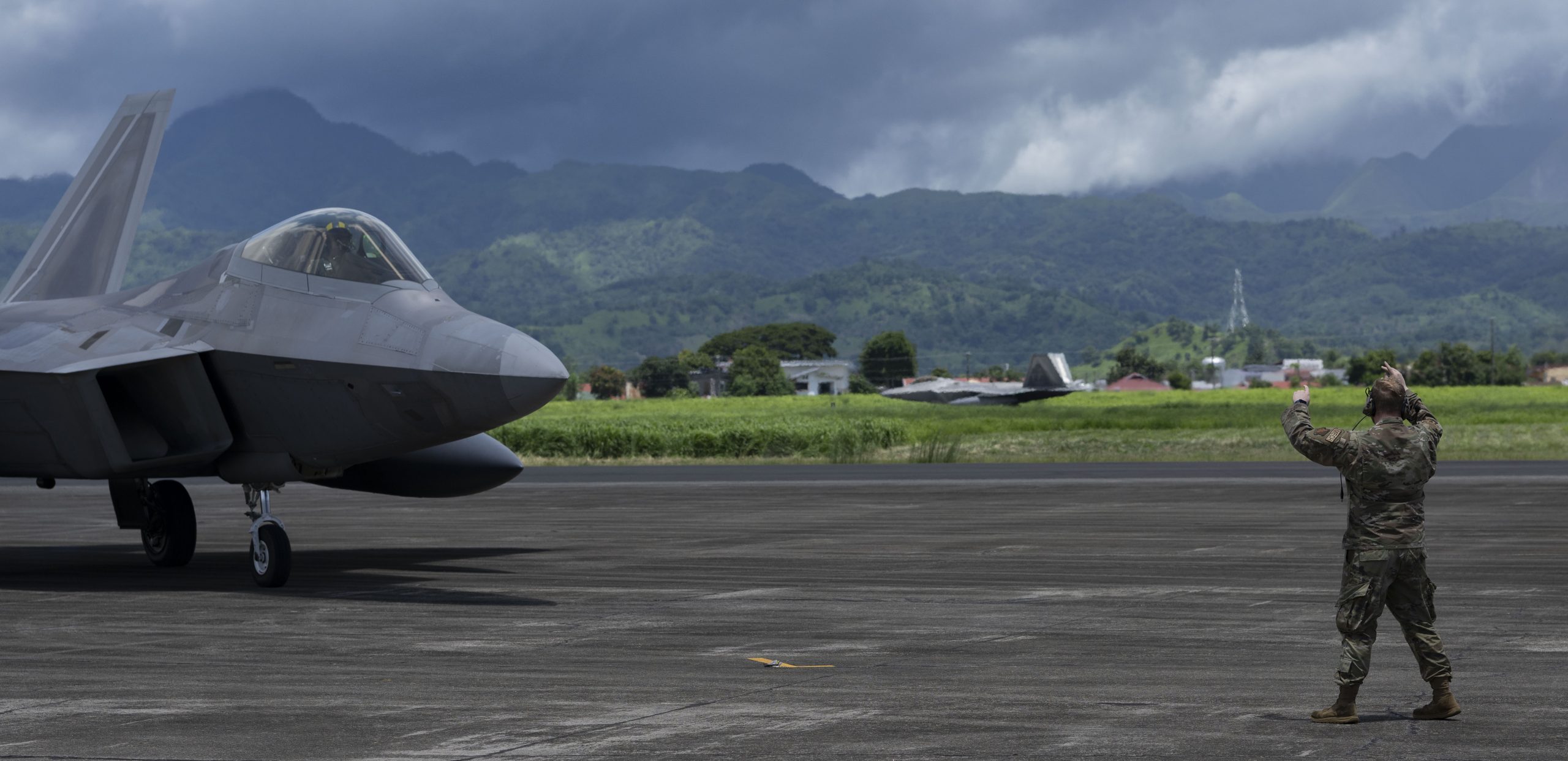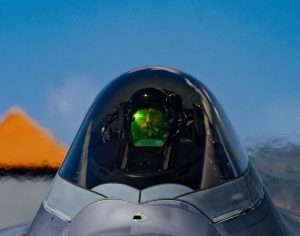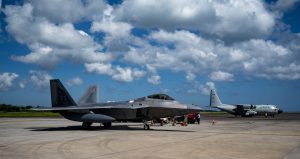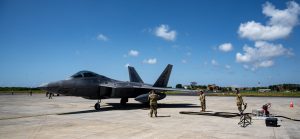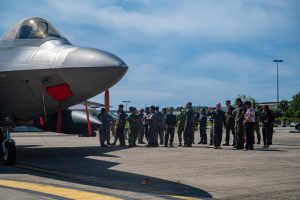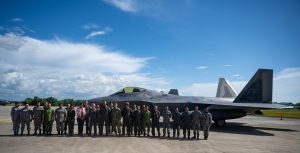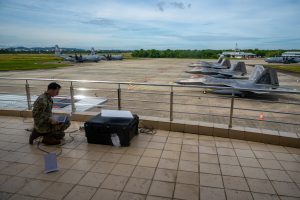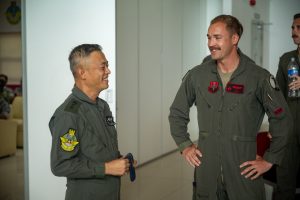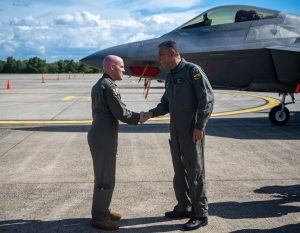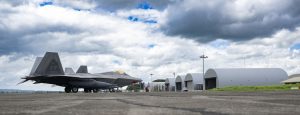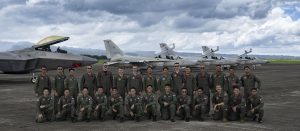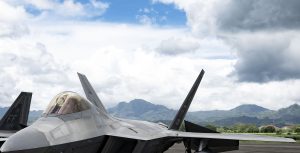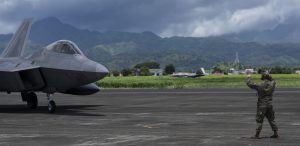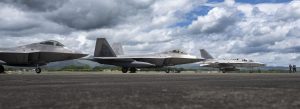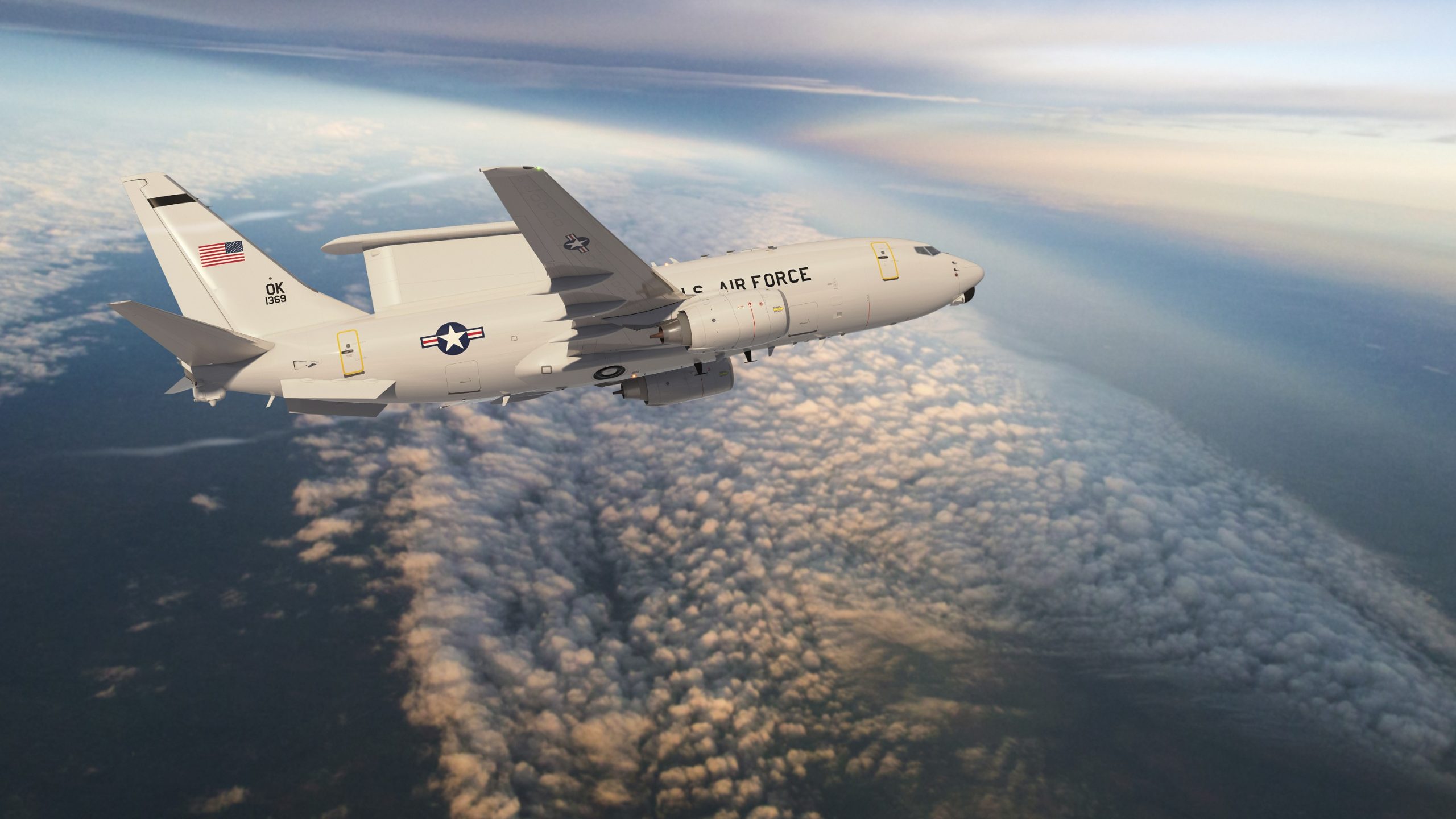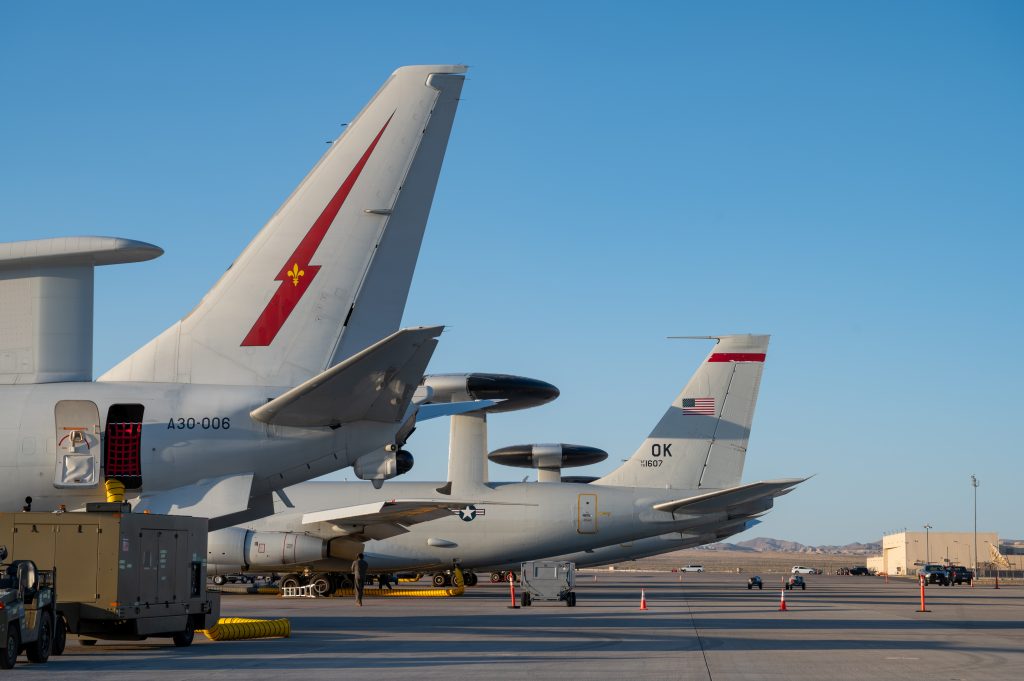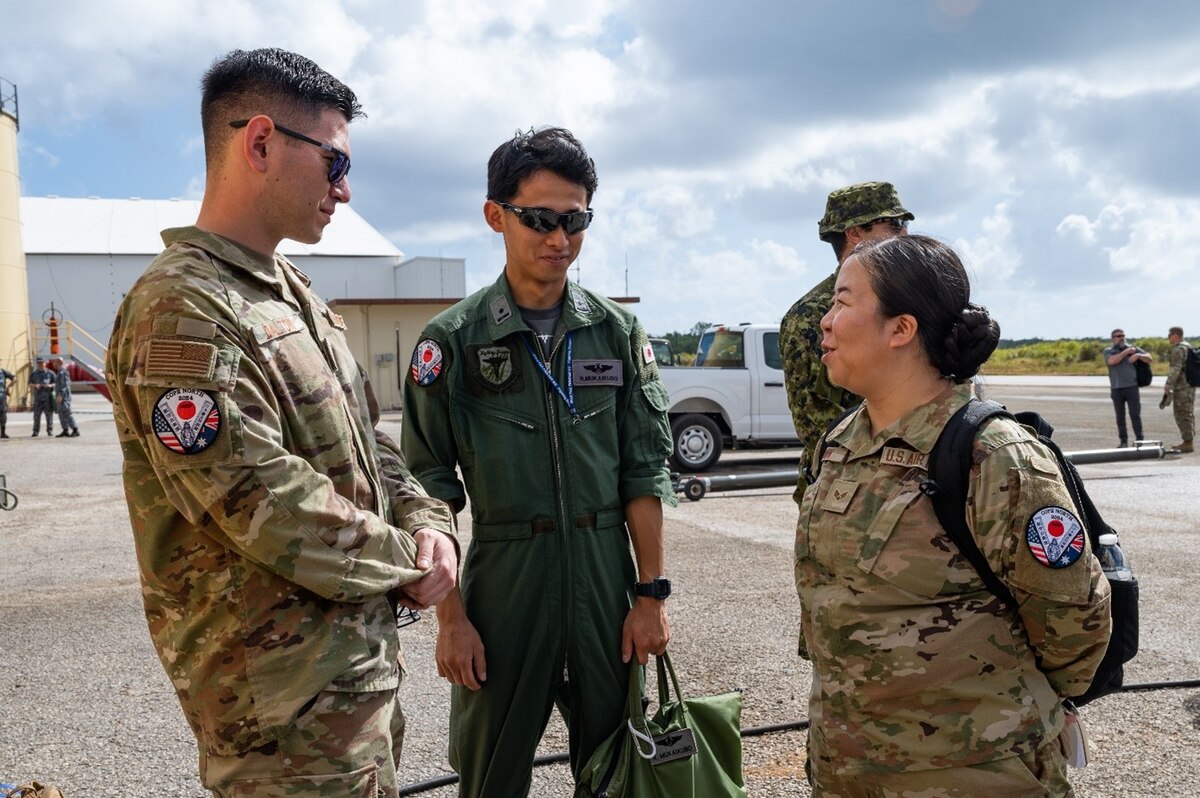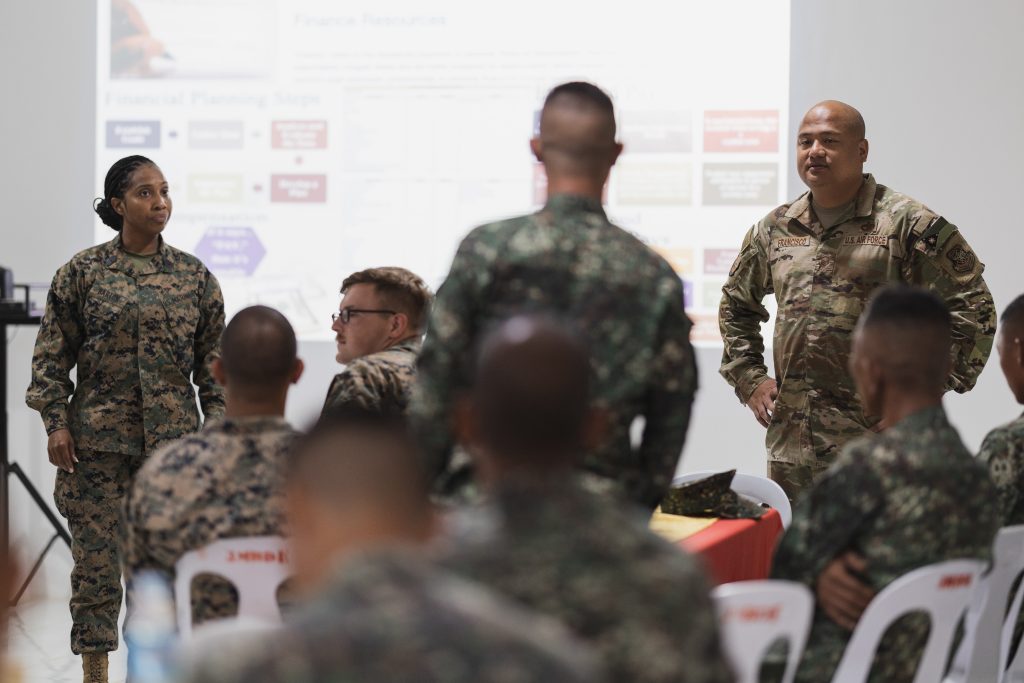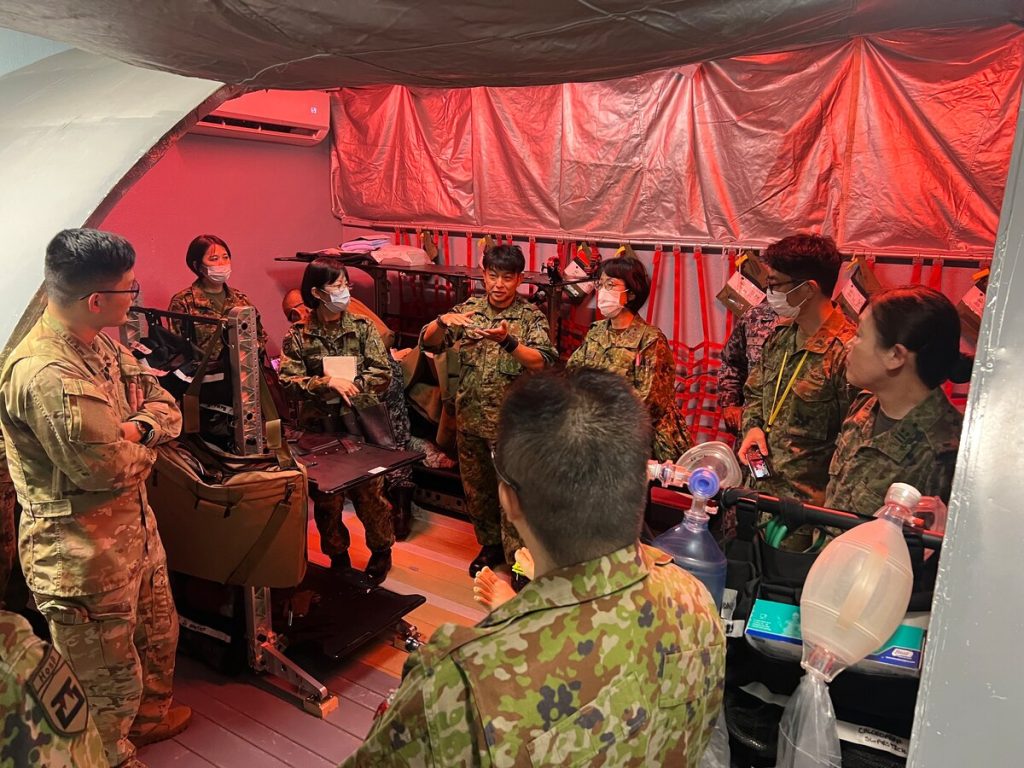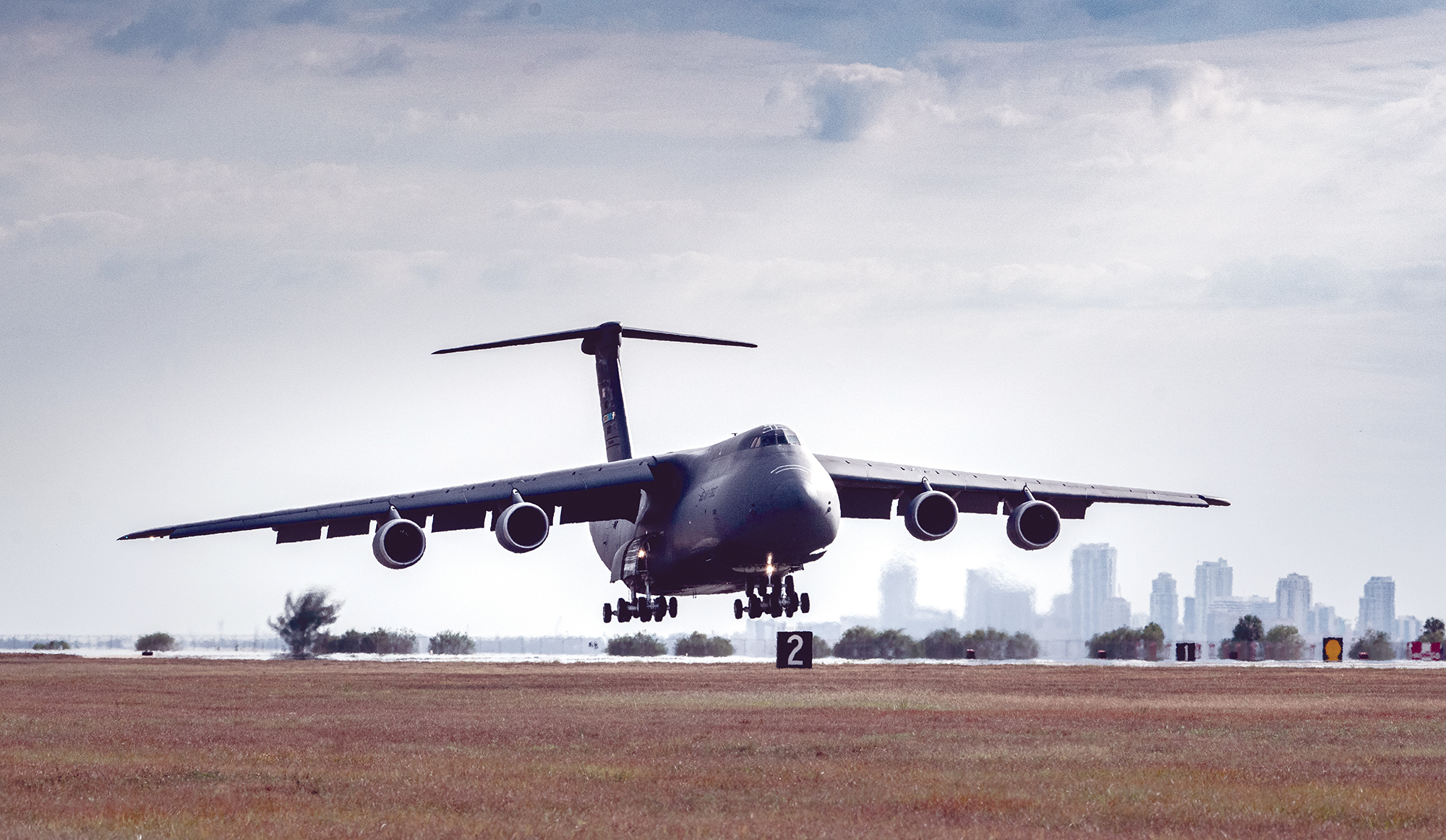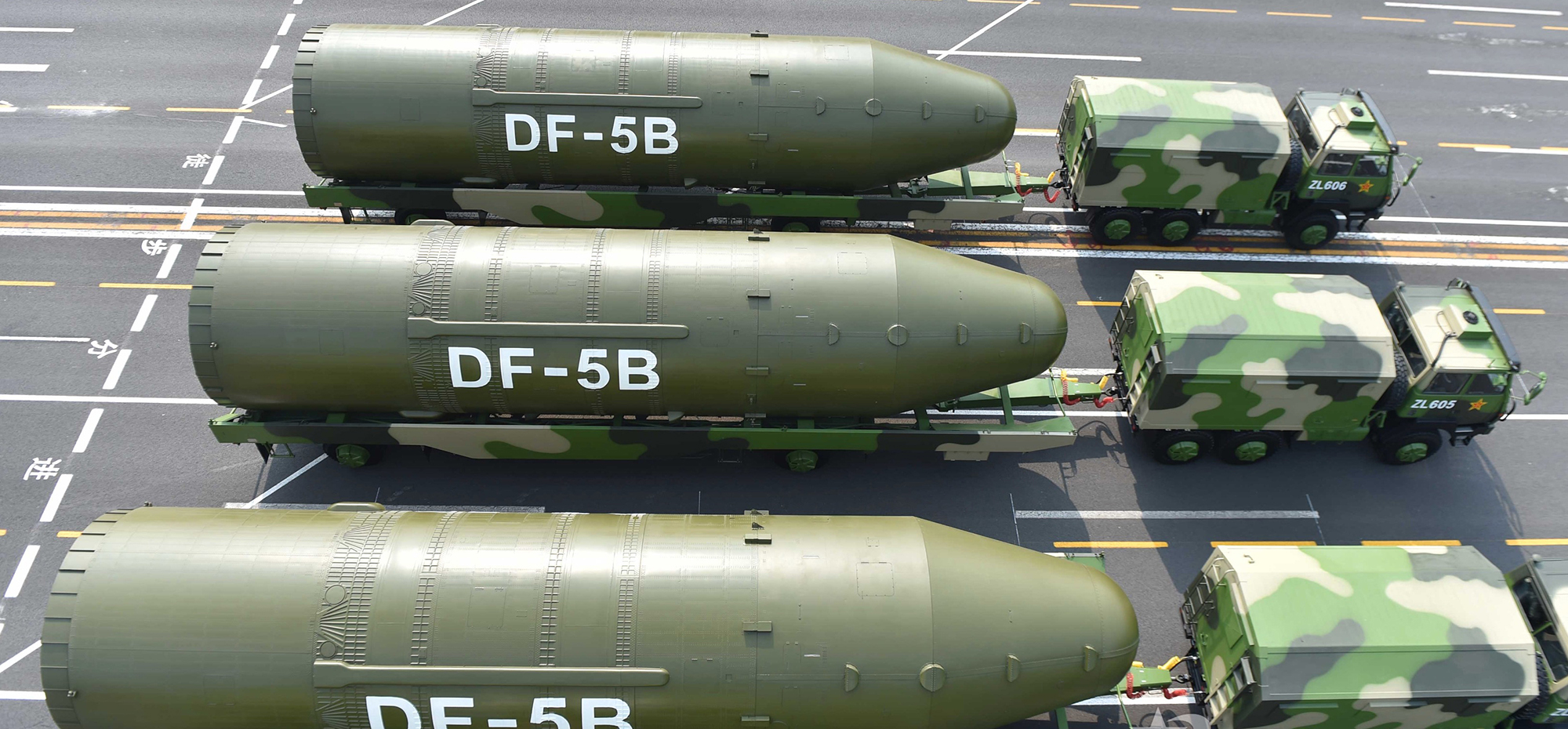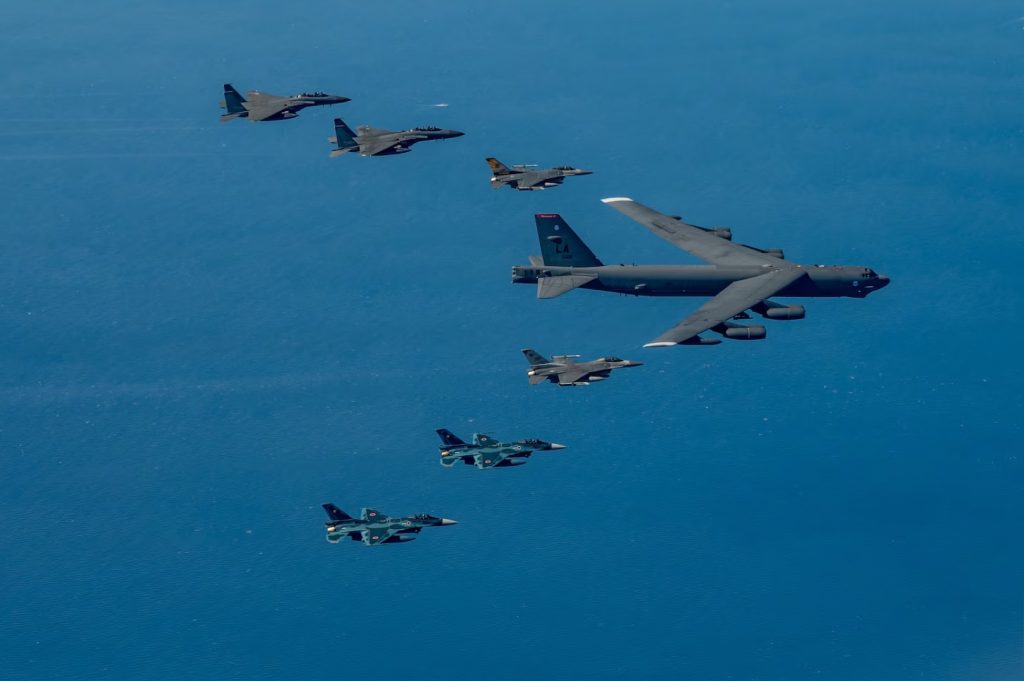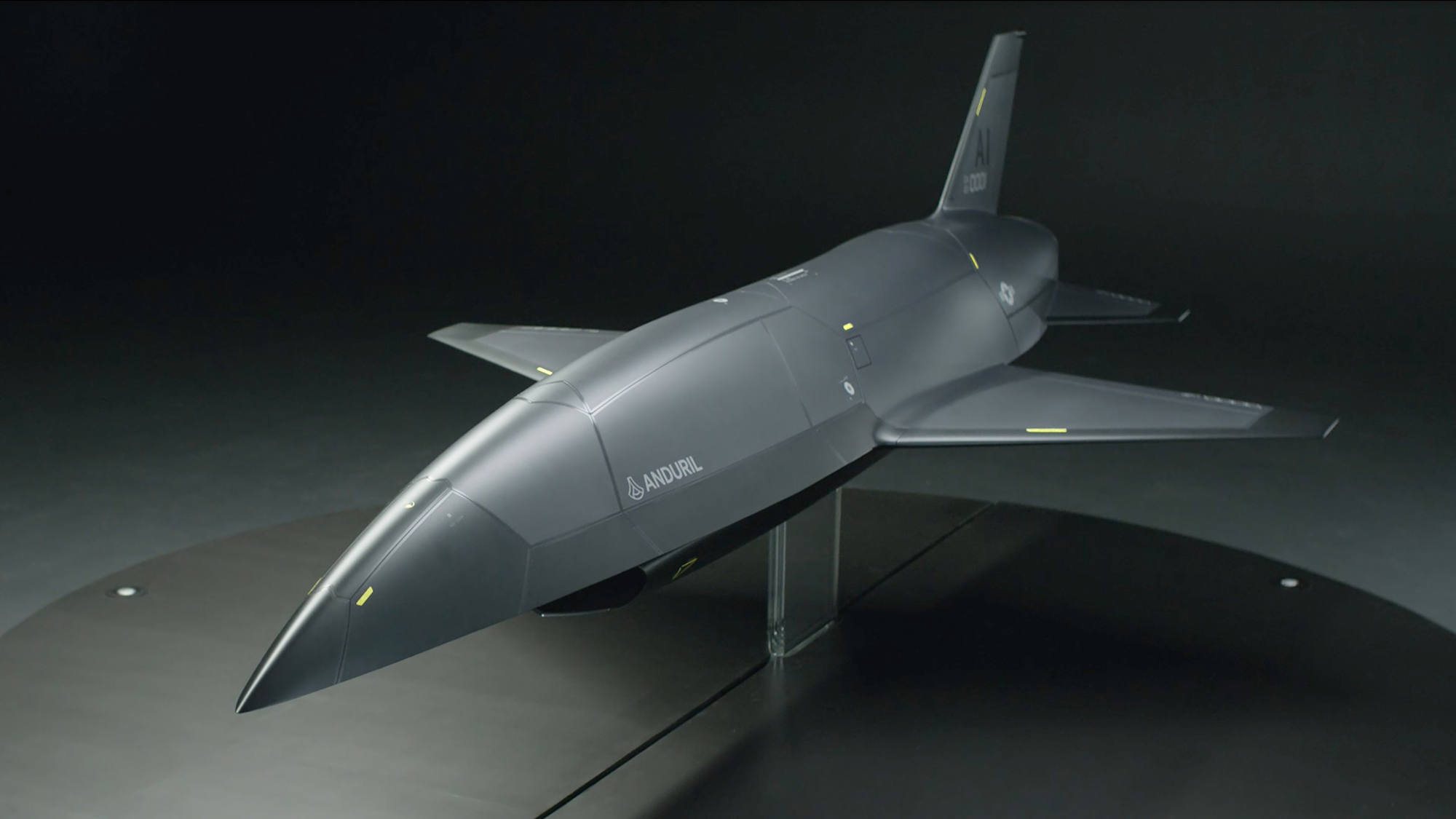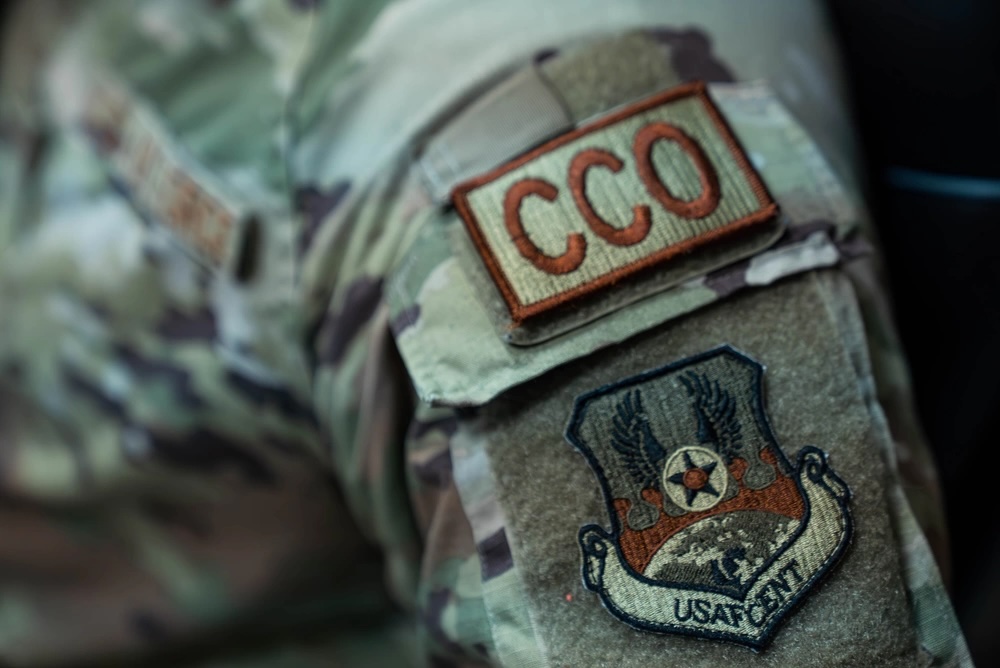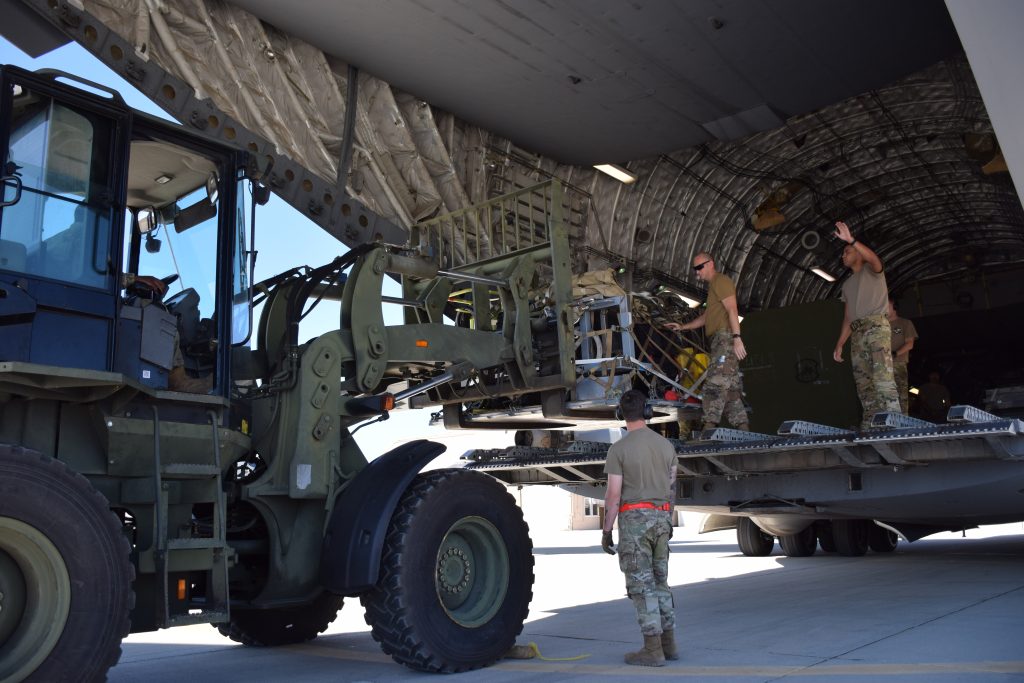F-22 Raptors from Joint Base Langley-Eustis, Va., landed in Indonesia, Brunei, and the Philippines last week, in a widespread display of fifth-generation airpower across crucial regions in the Indo-Pacific.
The F-22s, designated the 27th Expeditionary Fighter Squadron, recently wrapped up Pitch Black, an air combat exercise, in Australia. From there, they deployed throughout the region as part of an exercise dubbed Iron Blade.
Four fighters went to I Gusti Ngurah Rai Air Force Base, Indonesia, on Aug. 6. U.S. Airmen and members of the Indonesian Air Force trained together and conducted hot-pit refueling. The Indonesian Air Force wrote on social media that this is the first time F-22s have landed in Indonesia.
On the same day, four fighters landed at Rimba Air Force Base, Brunei, to kick off three days of briefings, static displays, and tours. This was also the first time F-22s have landed in Brunei, a small nation on the South China Sea—this March, USAF F-35s became the first fifth-generation fighters to land there.
Finally, on Aug. 8, six F-22s landed at Basa Air Base in the Philippines. Two participated in formation flights with Philippine Air Force FA-50 fighters, according to the PAF. Basa, newly renovated to accommodate more aircraft, has hosted American fighters over the past few years as part of Cope Thunder exercises between the two nations.
In each visit, the F-22s were supported by C-130 cargo aircraft carrying parts and personnel.
Indonesia, Brunei, and the Philippines each occupy key strategic territory along the South China Sea, and the U.S. Air Force has sought to bolster ties with all three through deployments and exercises in recent years—part of a concerted effort to build partnerships and counter the growing influence of China in the region. The F-22 remains one of the most potent symbols of American airpower, and Raptors are currently stationed at Kadena Air Base, Japan, as part of a rotation of fighters through the base.
